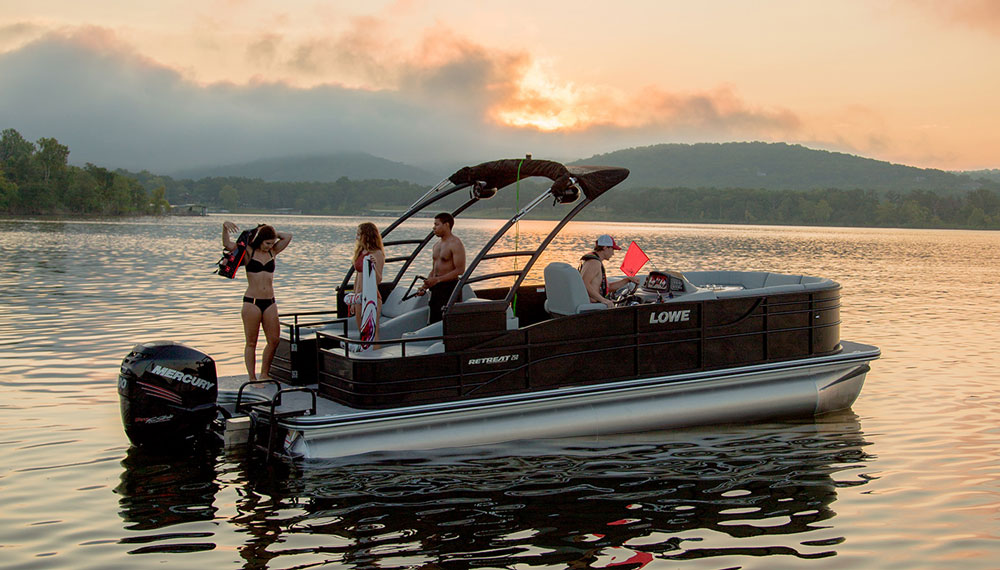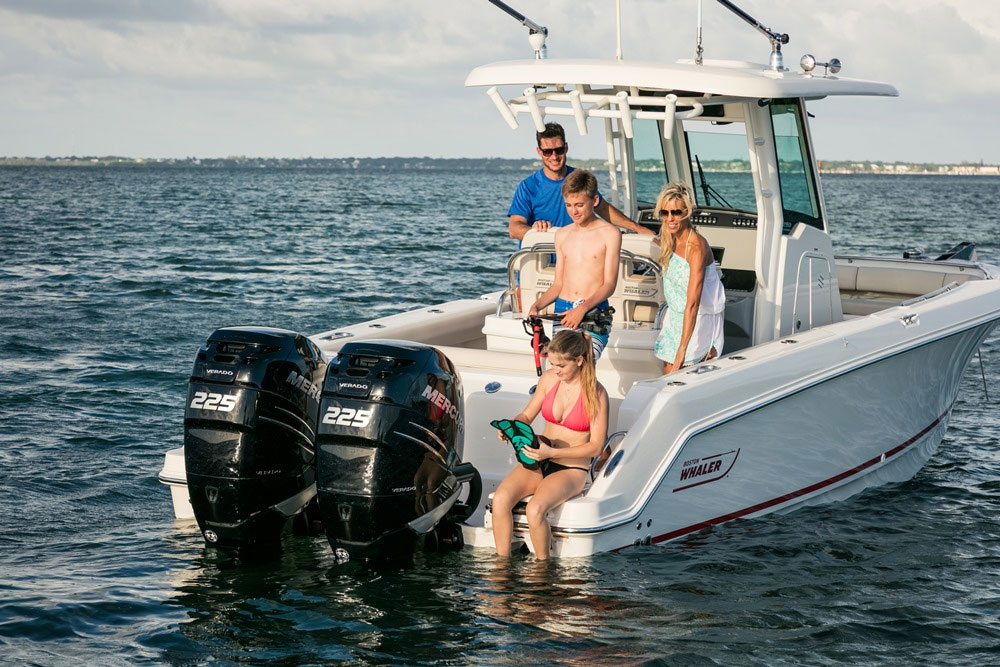Boat Loans: Best Ways To Finance A Boat
When looking to finance a boat purchase, it's important to understand the ins and outs of boat loans and using a boat loan calculator—and how to get a loan through financial institutions likes Wells Fargo, USAA, and Chase.
Cheap fuel, low interest rates, tons of new boat models and lots of lenders add up to this being just about the perfect time to buy (and finance) a boat. These days, borrowing is increasingly necessary too as boats have grown bigger and more expensive. The average new boat loan today is over $200,000, so there’s been an uptick in larger loans. That said, smaller loans are also getting attention since national and local banks, financial services firms and credit unions have returned to marine lending after the recession. It may be time to dive in and get that dream boat.
Boat Loan Calculator
Approximately half of all boats are financed and that percentage gets higher with purchases of new boats. But it’s not a world of stated income anymore. Lenders are doing their due diligence and with today’s access to online resources, it’s easy to do background and reference checks and income verifications, so the process has grown somewhat more complex. Fear not, there are many experts to guide the borrower and make the process less foreign and daunting. With nearly 30 years in the marine lending industry, Trident Funding is Boats.com preferred boat financing partner. You can get assistance and marine lending tools at Trident Funding.
Boaters can expect a rough standard 20/20/5 loan (20 year loan with a 20 percent down payment at 5 percent interest) to be processed quickly and relatively hassle-free.

Boat loans can be confusing. At boats.com, we'll make it easy with our boat loans and yacht financing tools at Trident Funding.
How to Get a Boat Loan
Becoming an attractive borrower today is multi-faceted. Here are a few things lenders like:
- Not surprisingly, a high net worth appeals to banks. A 2:1 net worth/debt ratio is good. Financial institutions are also looking to cross-sell their products and high net worth individuals represent opportunities for other kinds of financing including primary residence, second home, auto, RV and even a business. Also, your debt/equity ratio will be important. The lender wants to know that you’re not already overextended with other loans.
- Lenders want to see that the borrower has managed loans of a similar size before and therefore won’t be overwhelmed by the current transaction. Liquidity is also important. Just getting into the loan shouldn’t eat up all the borrower’s resources. Lenders look for liquid assets that will cover 12-16 months of payments if an employment situation should change.
- Stability and consistency are key. Steady employment, a history in the current profession, and a primary residence are factored together by a lender as part of the candidate evaluation process. Having other high value assets helps too as they are potential secondary sources of repayment.
- Credit scores in the 700 and 800s are ideal. However, even scores in the 600s may be acceptable today so long as other criteria look good.
- Having gone through the boat buying process before is a plus. Lenders know that experienced boaters understand the requirements of marine lending, as well as the ongoing costs of boat ownership and, are less likely to overcommit when choosing a vessel.

Whether you're buying a house, a car or a boat, lenders look for stability and consistency in your employment history, income, and assets.
Current Lending Climate
Interest rates bottomed out around 2014 but they are still low by historical standards and borrowers can expect 5-6 percent rates. The size of the down payment required will depend on the age, price, and type of vessel as well as on the overall borrower credit profile. Expect to pay 15-20 percent down payment on most monohull cruisers. Loans for multihulls generally require a larger down payment (20 percent), as do those for houseboats (25 percent). Zero-down lending is possible but will take a special lender and an exceptional borrower profile, and it will definitely translate to higher monthly payments.
Most boat loans are for 15 or 20 years and often there is no penalty for pre-payment. Longer terms mean lower payments but also more total interest paid. It’s possible to get a three-month reprieve from payments after the initial purchase with a 90-day deferred loan, which may (very slightly) increase monthly payments for the loan duration.
New boat loans may be originated, processed and closed in a week, which is much faster and easier than real estate loans. Financing for pre-owned vessels takes longer. Lenders who know the marine industry can process paperwork faster, provide worksheets with guidelines of all the things that are needed for a boat loan versus a real estate loan, can refer needed resources, and have an interest in making the loan go through. They may be infinitely quicker and easier to work with than a borrower’s personal banker.

Typically buyers can expect to receive a boat loan that extends for 15 or 20 years—usually without penalty for pre-payment.
Fun Facts and Red Flags
You may not know about some of the little benefits that can help you during the financing process. For example, borrowers can pay cash to get the vessel immediately but opt to finance later (like 3-6 months later, but not years down the line). Also, tax deductions are possible. As long as the vessel has a bed, a head, and a galley, it qualifies as a second home so the interest is deductible on federal tax returns.
Additionally, a vessel may be put into a family trust but in this case, be sure to factor in additional costs for attorney fees. And, more borrowers put yachts into single-asset limited liability corporations so long as the boat is meant for personal use. This has some tax advantages especially when it comes time to sell.
Financing is not only for the price of the boat. Hard or tangible assets can often be rolled into a boat loan and these may include electronics, anchoring packages, bottom paint, and extended service plans. That said, the labor to install the electronics, apply the bottom paint, and perform commissioning tasks for new boats, cannot be financed.
Finally, remember that boat dealers and brokers are great free resources. They have a vested interest in selling a boat and have relationships in the marine industry with lenders, insurers, surveyors and repair facilities. They can walk a borrower through the lending process and manage expectations on the timeframe and necessary steps.

When it comes to your first boat loan, don't be afraid to ask for help. Dealers, brokers and our team at Trident Funding are all happy to help you understand the process.
Now for the red flags: First, insurance is necessary and will need to be arranged prior to the loan closing. Your broker can help by providing a list of reputable vessel insurance agencies.
Liveaboard status is frowned upon so if the boat will be your primary residence, you’ll likely face some hurdles. Eviction laws make it difficult to repossess a boat that is lived on and by definition, a liveaboard presumably also has no primary residence to be used as collateral. That said, it’s not impossible to finance a boat that will serve as a home.
Many lenders will not finance a boat that is going into charter since it will be used for commercial purposes. It’s possible to finance a charter boat, but there are specialty lenders and rules for this process.
Since over 85 percent of boats sold in the U.S. are pre-owned, it’s good that used boats can be financed too. It is, however, more complicated and often more expensive to secure a loan for a used vessel. First, used boats need a survey or appraisal, which means a haul out and other costs. Sometimes a bank will require comparables in addition to the survey to assess fair market value and comps can be hard to find on unique/older vessels. A title examination will be needed to make sure there are no outstanding liens. Some lenders may finance a boat that is up to 20 or 30 years old.
Finally, keep in mind the entire cost of boat ownership. For example, buying a $500,000 boat doesn’t mean you’ll finance $400,000 even after a 20 percent down payment. Costs that must be factored into the overall price include the U.S.C.G. documentation fee (approximately $500), a survey for older vessels (approximately $25/foot of overall length), insurance, loan processing fees, taxes, freight, commissioning and more.
In Summary
The lending landscape has changed from the depths of the recession and the vast majority of boaters will qualify for a loan. The process is more rigorous and the background and reference checks may be more thorough, but the number of loans made is increasing, which is good news for boating overall.
Because there are more lenders than there were five years ago, sub-prime borrowers with credit scores in the 600s may still qualify. The tradeoffs will be higher rates and down payments but many lenders are now willing to make a deal.
In such friendly lending waters, why not jump in? With a good lender, that boat you’ve been eyeing may be within reach after all.
For more information on buying a boat, visit our Boat Buyers Guide, or read How to Buy a Boat: Tips for a First Time Buyer.
Editor's Note: This article was originally published in February 2018, updated in February 2019 and March 2020.












